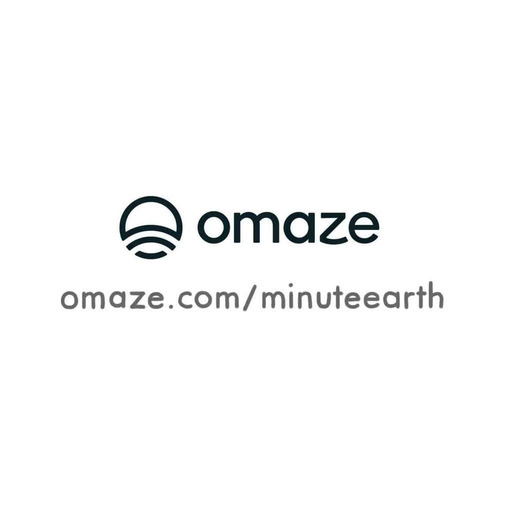For your chance to win two seats on one of the first commercial flights to space with Virgin Galactic – all while supporting a great cause – enter at https://omaze.com/minuteearth. While the rest of the world’s megafauna are still foundering in the anthropocene era, these two big animals have used little animal strategies to bounce back. Way back. LEARN MORE ************** To learn more about this topic, start your googling with these keywords: - Megafauna: Large animals, usually over 45 Kgs. - Anthropocene era: A proposed time period delineated the age during which human activity has been the dominant force on the environment and the climate. - Holocene Extinction: An ongoing extinction event of species due to human activity. - Fertility Rate: The number of babies an organism has in its lifetime. - Omnivory: The ability to eat food from two different trophic levels. - Bubble-Net Feeding: A cooperative hunting technique where groups of whales use bubbles to disorient fish prey. SUPPORT MINUTEEARTH ************************** If you like what we do, you can help us!: - Become our patron: https://patreon.com/MinuteEarth - Share this video with your friends and family - Leave us a comment (we read them!) CREDITS ********* David Goldenberg | Script Writer, Narrator and Director Adam Thompson | Illustration, Video Editing and Animation Nathaniel Schroeder | Music MinuteEarth is produced by Neptune Studios LLC https://neptunestudios.info OUR STAFF ************ Sarah Berman • Arcadi Garcia i Rius David Goldenberg • Julián Gustavo Gómez Melissa Hayes • Alex Reich • Henry Reich • Peter Reich Ever Salazar • Leonardo Souza • Kate Yoshida OUR LINKS ************ Youtube | https://youtube.com/MinuteEarth TikTok | https://tiktok.com/@minuteearth Twitter | https://twitter.com/MinuteEarth Instagram | https://instagram.com/minute_earth Facebook | https://facebook.com/Minuteearth Website | https://minuteearth.com Apple Podcasts| https://podcasts.apple.com/us/podcast/minuteearth/id649211176 REFERENCES ************** Vivitskaia, J D, Tulloch, Éva E Plagányi, Richard Matear, Christopher J Brown, Anthony J Richardson. (2017) Ecosystem modelling to quantify the impact of historical whaling on Southern Hemisphere baleen whales. Fish and Fisheries, 19:1 (117-137). Retrieved from: https://onlinelibrary.wiley.com/doi/10.1111/faf.12241 Kosma Madison M., Werth Alexander J., Szabo Andrew R. and Straley Janice M. (2019). Pectoral herding: an innovative tactic for humpback whale foraging. Royal Society Open Science. 6:10. Retrieved from: https://royalsocietypublishing.org/doi/10.1098/rsos.191104 Ritchie, Hannah, Roser, Max. "Biodiversity". Published online at OurWorldInData.org. Retrieved from: 'https://ourworldindata.org/biodiversity Pershing, A. J., Christensen, L. B., Record, N. R., Sherwood, G. D., & Stetson, P. B. (2010). The impact of whaling on the ocean carbon cycle: why bigger was better. PloS One, 5(8), e12444. Retrieved from: https://journals.plos.org/plosone/article?id=10.1371/journal.pone.0012444 Ripple, William J., Newsome, Thomas M., Wolf, Christopher, Dirzo, Rodolfo, Everatt, Kristoffer, T.Galetti, Mauro, Hayward, Matt W.Kerley, Graham I. H.Levi, Taal, Lindsey, Peter A, Macdonald, David W. Malhi, Yadvinder, Painter, Luke E.Sandom, Christopher J., Terborgh, JohnVan, Valkenburgh, Blaire. (2015) Collapse of the world’s largest herbivores. Science Advances. 1:3 Retrieved from: https://advances.sciencemag.org/content/1/4/e1400103/tab-pdf Meynecke, Olaf. 2021. Personal communication. Center for Coastal and Marine Management, Griffith University. https://www.dr-olaf.com/ Pallin Logan J., Baker C. Scott, Steel Debbie, Kellar Nicholas M., Robbins Jooke, Johnston David W., Nowacek Doug P., Read Andrew J. and Friedlaender Ari S. (2018) High pregnancy rates in humpback whales (Megaptera novaeangliae) around the Western Antarctic Peninsula, evidence of a rapidly growing population. Royal Society Open Science. 5:5. Retrieved from: http://doi.org/10.1098/rsos.180017 Holland, Jennifer. (2015) Black Bears Are Rebounding - What Does That Mean For People? National Geographic. Retrieved from: https://www.nationalgeographic.com/animals/article/150626-black-bears-animals-science-nation-conservation?loggedin=true Ramona L. Gonzales, Alejandra V. Mendoza, Brendan M. Himelright, Jenna M. Moore, Thomas J. Spady (2013) American black bear mating behavior and chemosensation of estrus. Ursus, 24(2), 139-147. Retrieved from: https://bioone.org/journals/ursus/volume-24/issue-2/URSUS-D-12-00026.1/American-black-bear-mating-behavior-and-chemosensation-of-estrus/10.2192/URSUS-D-12-00026.1.short Himelright, B. M., Moore, J. M., Gonzales, R. L., Mendoza, A. V., Dye, P. S., Schuett, R. J., Durrant, B. S., Read, B. A., & Spady, T. J. (2014). Sequential ovulation and fertility of polyoestrous in American black bears (Ursus americanus). Conservation physiology, 2(1), Retrieved from: https://doi.org/10.1093/conphys/cou051
Publié le par Neptune Studios
Les podcasts externes de ce site sont récupérés à partir de liens publics (Feed XML/RSS) qui nous ont été fournis par nos utilisateurs ainsi que des partenaires. Ce podcast m'appartient.


 Education
Education